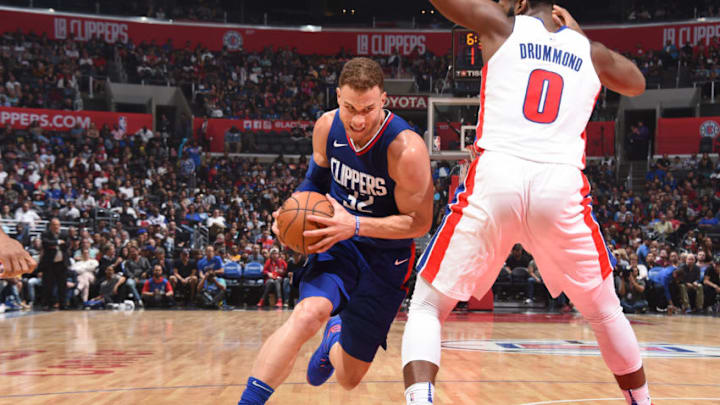You may not have heard, but the Los Angeles Clippers traded Blake Griffin to the Detroit Pistons. There’s a way in which the Clippers got a huge haul — so much so that some are asking whether the Pistons gave up too much. Tobias Harris is solid if unspectacular, as my old high school English teacher used to say, Avery Bradley is a decent rotation piece and Boban Marjanovic certainly has some strong points, starting with being 7-foot-3. Then there’s the first round pick that went from Detroit to LA, and that’s likely to be relatively high. Detroit is out of the playoffs in the East, and traded away most of their depth.
But if we’re honest, there’s also a very strong “weird fantasy trade offer intended to convince you that three mediocre players are more valuable than one really good one.” In that case, as this one, the major headline is you can only play five guys at a time and the Pistons got the only one in the passel that moves the needle significantly. And while, obviously, everyone’s health and money concerns are reasonable, the fact of the matter is the Pistons picked up one of the best players in the game and have him under their control for quite a long time.
I don’t need to do trade analysis, though. There’s lots of that. What I’d like to talk about is something else, which is that “the Blake Griffin trade,” as it will come to be known to history, is a tremendous barometer of what you think is most important in terms of building a competitive team. For years now there’s been a widening divide between present-oriented and future-oriented fans, with long-range thinking typically prevailing among the better known blogs, often in despite of competitive but not ultra-competitive teams. The Blake trade brought it all out in the open.
Read More: The day I almost met Shawn Bradley
Here’s the deal: if you are most invested in on-court talent, you’ll think the Pistons won this trade big-time. You gotta say “when healthy” with Blake, which is a big part of the problem, but he was averaging 21.6 points, 8.1 rebounds and 4.9 assists last year playing with Chris Paul and DeAndre Jordan. There’s just not a lot of guys that can do that in limited opportunities. We forget about how good he is because of his times on the DL, but he has to rank in the top five of big men in the league, and pairing him with Andre Drummond is a really interesting move. Drummond is in some ways a lot like the center that Griffin is used to playing with, but a more prolific scorer, and even better rebounder, and this year at least, a better shot-blocker. He’s not as efficient, but then he hasn’t been playing next to Griffin either.
If, however, you are especially nervous about big contracts to veteran players, you’ll think the Pistons made a horrible mistake. In a way, Griffin — who’s just 28 — is here a victim of the fact that we just aren’t used to these new, huge contracts. It’s daunting to think of him making 36 million dollars three seasons from now, but then again, so will Mike Conley (almost). But how you think about this ultimately comes down to how you view the Pistons’ situation.
It’s easy to like a big splurge for a team that doesn’t mind paying the luxury tax and is pretty close to competing, but picking up an injury prone player with one of the biggest, longest contracts in the league today is a strange move for a fringe playoff team in the Eastern Conference. Then again, it’s easy, too, to assume the future is always going to be better than the present until you commit to a given present — it’s likely enough that the Pistons would never get a player as good as Griffin, no matter how well they plan, other than through this particular move. If you could draft, sign or trade for Blake Griffins at will, we’d all be doing it, all the time.
Finally, if you think cap flexibility is a big deal for team-building, you’ll think it’s the Clippers who made a great trade. They got a big, long contract off their books and replaced it with guys who will be easy to get rid of. They have dreams of luring every player in the league to play for them next year, and while, as a Mavericks fan, I’m skeptical that the “lure players here by getting rid of all the reasons they’d want to be here” approach works, maybe it’s easier in LA than Dallas.
Next: Clippers can be (almost) as attractive as Lakers
Ultimately, of course, in any trade who’s “right” or “wrong” has to do with where the probabilities lie. Smart strategic decisions can backfire while terrible choices can work out. But what’s interesting here is everyone has a point, and we’ll have to wait and see. Maybe this trade won’t matter for anyone at all.
